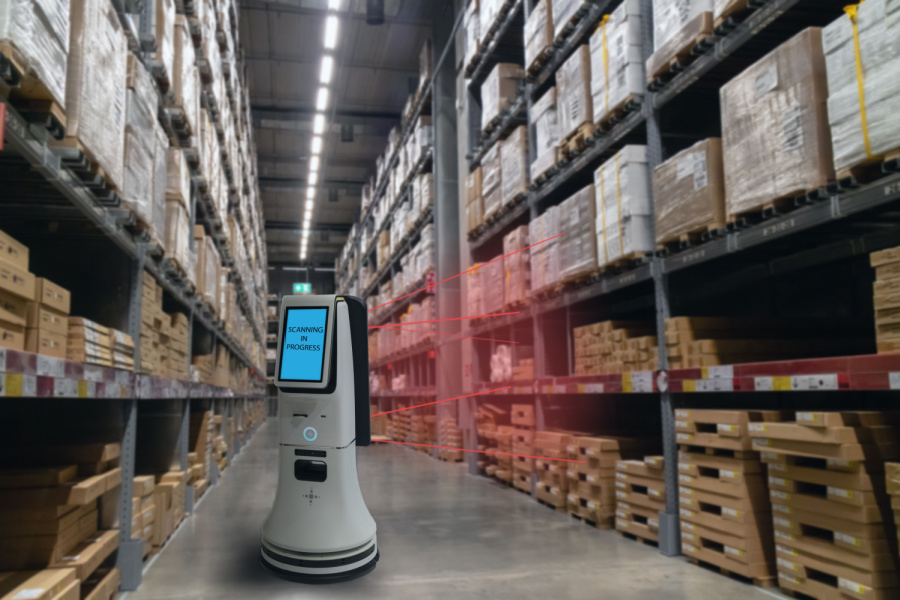When customer expectations continue to rise amid growing supply chain complexity and operating costs, companies in every industry face the challenge of keeping expenditures down while delivering stellar customer experiences in a time of disruption. Risk mitigation is essential, agility is vital, and greater efficiency is the drumbeat of the modern supply chain.
Supply-chain executives know they have to create disruptions of their own to optimize operations and increase customer satisfaction. The resilient supply chain, one that can triumph over current and emerging challenges, requires a multi-phased approach that embraces warehouse automation.
Warehouse Automation: Blending the Best of Humans and Technology
Automation goes hand-in-hand with talent management. The team’s decision-making and ability to respond quickly to changes are vital. The efficient warehouse of the future depends on the right mix of technology and people that implement automation to end bottlenecks–and leaves resources available for value-added tasks.
Warehouses involve varying systems working together, and automation solutions are just as diverse. The challenge lies in sifting through the options to find what works best for your particular situation rather than automation for its own sake. Automation in the wrong places or with the wrong product can create more problems than it solves. Among the available technologies are:
Goods-to-person technology
This solution involves warehouse robots or machines that deliver goods to workers to assemble or pack, and the best technology includes autonomous forklifts, tuggers, transporter, and assembly line vehicles. According to ReadWrite, employees use 30% of their shifts traveling the warehouses. This makes your warehouse ripe for technologies such as:
Automated storage and retrieval solutions (ASRS): This technology uses various vehicles, cranes, and carousels to move and store items within the warehouse.
Order-picking robots: These robots enable workers to do more and do it faster, easier, and with fewer errors. Instead of traveling throughout the warehouse pushing heavy carts or walking behind slow-moving robotic carts, robots bring items to the worker. You can reallocate your workforce, creating new opportunities for them as they contribute more value to your business These robots boost productivity along with improving worker health and safety and are infinitely scalable, offering the flexibility that brings resiliency when needs change. And according to Gartner, 75% of large organizations will have robots in their warehouses by 2026.
Conveyor systems: According to SEMCOR, this is where warehouse automation began in 1892. Today’s designs are considerably improved; modern conveyor belts move materials along assembly lines to packing and shipping areas, among others.
Wearables
Designed for use by warehouse workers, wearables connect to warehouse management systems (WMS) to provide information to speed up operations, enhance inventory management, and support core processes. Through glasses and head-mounted systems, employees get on-the-spot access to technology and information about shipping, receiving, routing, picking, inventory management, and replenishment. This results in fewer distractions and greater efficiency. Because workers can do more in less time, their time can be reallocated to more critical tasks.
Warehouse automation allows you to leverage technology to complete repetitive tasks with minimal human intervention. But, today’s warehouse automation technology does much more than that. Yesterday’s conveyer belt has evolved into solutions that can perform a wide range of simple and complex tasks that can be tailored to your needs.
In sum, the myriad benefits of warehouse automation mean:
- A boost in productivity
- Healthier workers
- Higher worker satisfaction and retention
- Reduced operating costs
- Improved accuracy
Employees are universally more efficient, processing time decreases, space utilization increases, and inventory management improves. An automated warehouse reduces order preparation time, enabling you to meet customer demand for speedy delivery. Scaling becomes almost effortless, and your warehouse gains resilience to disruption.
Investing in warehouse automation–where it makes sense – also can reduce labor shortages; employees are more productive, and reducing the time spent on tedious tasks improves retention.




